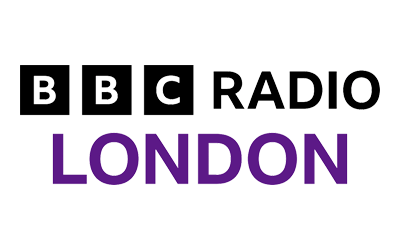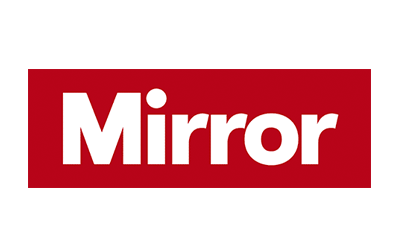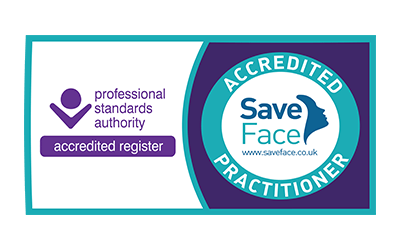Here are the answers to some of our most frequently asked tummy tuck questions. If you’d like any more information, call 02037 335839 to speak to one of the team or arrange a consultation.
Quick Links
FAQs for Tummy Tuck Surgery (Abdominoplasty)
An abdominoplasty or ‘tummy tuck’ is the term used for a procedure that reshapes and resculpts the abdominal region through removal of excess skin and fat and tightening of the underlying muscles.
This will be decided at your consultation. During your consultation Mr. Karidis will ask you about your general medical history including details about any previous abdominal surgery, or childbirth (where relevant!). Women who plan to become pregnant imminently should usually postpone the operation until after their family is complete.
If you are a smoker you will be asked to stop smoking well in advance of surgery. Smoking seriously constricts blood vessels and therefore decreases blood flow to a given area resulting in poor healing. Aspirin and certain anti-inflammatory drugs and other medications can cause increased bleeding, so you must avoid these. You have to remember that an abdominoplasty is not performed for overweight individuals and thus a patient should have a weight that is within 10-15% of their ideal weight.
Remember to always be open in discussing your expectations at the consultation. Mr. Karidis will also be frank with you and together you will work at choosing the procedure that is right for you and which will come closest to achieving the desired result.
A physical examination will determine if you are a candidate for an abdominoplasty procedure. In general an abdominoplasty should not be performed on significantly overweight patients. Heavier patients will be disappointed with the overall result even if surgical measures or altering existing techniques such as extending the incision and liposuction are performed.
This is because being significantly overweight will still leave you with substantial and significant fullness in the flanks, upper, and mid abdomen and buttocks and therefore an unsatisfactory outcome. Furthermore, in overweight individuals there is usually a large proportion of fat deep behind the abdominal muscles among our internal organs. This fat is not accessible to surgery and can only be lost with weight reduction measures such as diet and exercise.
Performing surgery in these situations does not lead to a flat tummy. To avoid this disappointment and to minimise the need for a secondary procedure, the best candidates are men and women who are within several pounds (i.e. 10%) of their ideal weight. If you are significantly more than this then you will be asked to reduce some weight before going ahead with any surgery.
In certain borderline situations abdominoplasty can be performed in individuals whose weight is perhaps slightly above it being within their 10% of ideal weight (i.e. 15%). This can be technically performed with some success, but with the understanding of a couple of provisos.
First is that, the result will not be as ideal as it would be by getting you to within your 10% of ideal weight, and that secondly further secondary procedures, i.e. liposuction may be required, or that further weight reduction will be necessary to further improve the result. Abdominoplasty in these situations is usually performed to basically remove the obviously loose, hanging skin, which does not go with even the most diligent of exercises and diet, and that the hope is that this will act as an incentive or motivation for you to pursue further weight reduction.
There are a number of variations in the technique of abdominoplasty. The decision will be based on the quality of your skin, the presence of stretch marks, the laxity of your muscles, and the amount and distribution of fat. A definite decision can only be made at the consultation after a proper examination. However, broadly speaking, if you have loose muscle and excess skin in both the upper and lower abdominal areas with only modest fat deposits you will most likely require a full abdominoplasty.
Occasionally, what is called a ‘mini’ abdominoplasty is performed. This may be appropriate in certain patients who have loose skin confined mainly to the lower abdominal area, from the belly button downwards, but have retained good skin and muscle tone above the belly button, and with little or no excess fat.
Alternatively if this is accompanied by modest excess fat in the upper abdomen then liposuction may be used in conjunction with the ‘mini tuck’ to improve the result. However please note that in Mr. Karidis’s experience, very few patients are suitable for this ‘mini’ tuck. It would also be fair and reasonable to state that the term ‘mini tuck’ is actually a misnomer as the scar is still about 10 inches long and therefore cannot be deemed very ‘mini’.
In the full abdominoplasty, you must understand that there is a long incision made within the so called ‘bikini line’ just above the pubic area, from hip to hip. Every effort will be made to place this scar in the ‘bikini’ line, however as fashions with bikinis change regularly this is not always perfectly hidden. The skin and fat is then peeled off the abdominal wall up to the umbilicus (tummy button).
At this point a second incision is made around the umbilicus, in a measure to free this from the surrounding tissue. Once this is done, the skin and fat layers of tissue (called a flap) which was initially lifted, is continued to be peeled off the abdominal muscles, leaving the umbilicus on a stalk, and is then continued all the way up to the border of the lower rib cage. The exposed muscles are then tightened as necessary by stitching them together creating a firmer abdominal wall and a narrower waist in a similar way a corset is tightened in midline with a lace.
The peeled flap of skin and fat is then stretched downwards towards the initial incision and any extra tissue is removed. The incision is subsequently stitched closed but not before a new hole has been made for the umbilicus, which as mentioned is sited on a stalk, in order for it to pop through. Drainage tubes are usually placed under the skin to collect any excess fluid that may accumulate in the first 24 hours after the operation.
These are removed when fluid production has ceased (usually 24-48 hrs). In the ‘mini tuck’ technique the skin is separated only between the lower incision line just above the pubic region, and an area just below the umbilicus. The umbilicus is left in place without the need for a further incision. Liposuction may be combined with this procedure if the distribution of fat calls for this.
Abdominoplasty is usually performed under general anaesthesia (completely asleep). You will usually require an overnight stay at the hospital.
Depending on the technique used, and whether this is combined with any other surgery such as liposuction, it usually takes approximately 2 hours.
Once you’ve recovered and returned to your room you will notice a drip in the back of your hand which will give you necessary fluids and antibiotics for your recovery. You will also notice a wrap round compression garment situated around your waist and abdomen. This is to provide compression to the surgical site to reduce the postoperative swelling and bleeding.
In addition you will notice the presence of 2 tubes or drains which are usually placed under the skin to evacuate any fluid build-up following the surgery. These usually come out the following day although in situations where there is increased drainage these stay in for an extra day. You will find that the abdominal area will be quite uncomfortable, mainly in the midline in the upper part of your abdomen, and that you will probably have a pillows placed behind your knees in order to keep these bent to reduce the tension in your abdominal muscles.
We encourage patients to mobilise quickly in order to resume the normal circulation in the legs. However note that you will probably need to walk slightly bent forwards once you are up and about, for the first couple of days as you will find this reduces any pulling feeling. You will however gradually straighten up after a day or two as it becomes more comfortable. All stitches used for this procedure are dissolving and therefore there is no need for any stitch removal from the wounds.
Pain and discomfort are subjective sensations but it is true to say that an abdominoplasty is considered one of the more painful procedures. Appropriate pain killers will keep you comfortable. Compared however to a caesarean section delivery, which requires cutting into the muscles to deliver the baby, an abdominoplasty, which only tightens the muscles on a more superficial level, is significantly less painful.
Any pain is probably more noticeable when standing or and walking in the first few days following surgery and usually involves the upper half of the tummy. Some patients report the sides (flanks)-which sometimes need some liposuction to contour the waist – as being more painful than the abdomen. Thus for the first week or so you will need to take regular painkillers in order to minimise this.
Following surgery you will experience considerable swelling and some bruising of the abdomen. This will be more noticeable if the abdominoplasty was accompanied by liposuction. The bruising usually lasts about 3 weeks. During the first 2 -3 weeks after surgery, some patients may experience a minor loss of wound adhesion at any point of the incision site.
This is a temporary complication, which will require regular dressing changes initially. Eventually a scab develops over this, which subsequently separates after 3-4 weeks. However some distortion of the skin around the scar may ensue particularly if this has occurred over the hip region. Further revision surgery may be required if necessary. While most of the obvious swelling will also have dissipated by about a month, subtle swelling will still be present in the lower abdominal areas above the incision line for up to 6 months.
In addition you will notice that the abdomen will feel firm to touch, particularly along the edges of the incision site. This will be as a result of the normal healing process laying down elements of scar tissue to facilitate healing. When this occurs, massage as instructed by Mr. Karidis at your follow visits will speed up the recovery. It gradually resolves in time but may take a few months to complete. You should expect the sensation to the skin over the lower abdomen to be reduced after surgery.
This is as a result of surgical trauma to the nerves in the region. Although this usually recovers in a few months, permanent numbness in the skin region between the scar and tummy button can ensue. Your belly button will also be quite distorted and swollen in the first few months. This is quite normal, however it will settle as the months go by.
As already explained the scar length will be substantial. These normally extend from hip to hip above the pubic area in a slightly curved but horizontal line. At times it may be necessary to add a small vertical component to this and therefore the appearance may be likened to an upside down ‘T’.
Although all surgeons try to suture the incision as neatly as possible, it is ultimately impossible to predict a scars’ eventual appearance. In fact very rarely can abdominoplasty scars be described as hairline. You must understand that due to the normal healing response these always appear red, raised and lumpy in the first few months after surgery, but do tend to settle with time. A silicone gel sheet will be provided for you and which will help the appearance of the scars.
However it may take up to 18 or 24 months to do so. Stretching and prominence of all or parts of the scar however can occur. If necessary, and when deemed appropriate, it may be necessary to revise a scar to try to improve its appearance. This will be discussed at the follow up consultations.
Yes, you can become pregnant after an abdominoplasty. Your skin will be capable of stretching and accommodating your enlarging uterus and baby. However this is not ideal, as further pregnancies will stretch and loosen your skin again, giving rise to unwanted skin laxity and stretch marks again. Ideally, it is best to have finished with your pregnancies before undergoing any abdominoplasty procedure.
Any stretched or loose skin removed from this operation will not return. However this is provided you maintain your weight and do not subject yourself to large weight fluctuations. Furthermore if you become pregnant following your abdominoplasty you must remember that the skin will stretch again because of the enlarging womb and baby and that therefore it is likely you will develop further loose and stretched skin afterwards.
Whilst it is true that when an abdominoplasty is performed by a qualified plastic surgeon the risks are small, nonetheless, specific complications with this procedure can and do occur. As in any procedure the risk of significant infection is always possible. This is minimised by careful surgical technique and the preventative administration of antibiotics both at the time of surgery and after.
However despite these measures mild infection is relatively common and can occur around the incision site, but usually subsides over a period of about 2 weeks. Risks such as blood clots are rare. You will be asked to wear special stockings (TED) just prior to coming to theatre, to reduce this likelihood. Furthermore during your operation special pump devices (Flowtron) are wrapped around your calves to stimulate continued blood flow to this region and avoid any stagnation of blood which can lead to blood clots.
Early mobilisation by moving around as soon after the surgery as possible also reduces this considerably. As mentioned earlier, swelling should be expected after this operation. When mild or moderate swelling is present, the body rapidly reabsorbs this. Very rarely, increased bleeding can lead to more significant swelling and the development of a haematoma (a collection of blood under the skin).
If this were to happen, surgical drainage to evacuate this would be required. Ultimately however this should not affect the final outcome. Another possible complication is the formation of a collection of fluid called a ‘seroma’. This fluid is clear and yellow in colour. It is seen as a swelling in the lower abdominal region, and many times patients report that they can feel this fluid moving under the skin.
It is usually noticed at about 10 days after surgery. Please note however that Mr. Karidis has modified his technique over the years in such a way to reduce the incidence of seroma through internal quilting sutures. This has proved very effective and in fact only very few of his patients develop seroma post operatively. Should it develop however the treatment will depend on the amount of fluid present.
If this is deemed to be small and is not causing any discomfort, then only a pressure garment is applied and the body reabsorbs this, usually by about a month’s time. If however the amount of seroma is significant and causes pain or discomfort, then the initial treatment is to draw out this fluid with a needle (called aspiration).
Following aspiration the swelling rapidly disappears. If necessary this procedure may be repeated in a week’s time. In rare situations (and mainly with smokers) wound healing problems can occur which can lead to skin loss resulting in slow healing and unsightly scarring. Stopping smoking 4 week before and 4 weeks after your surgery will reduce the incidence of this occurring.
In accordance with the National Healthcare commission guidelines, and according to the last ten years of annual audit figures submitted to the Hospital of St. John and St. Elizabeth in London, Mr. Karidis performed on average 40 abdominoplasty procedures per year. It is easy therefore to understand therefore that having been in private practice since 1997, Mr. Karidis has performed a large number of these procedures.
Abdominoplasty is a relatively major operation and should always be respected as such. Therefore you should expect a few weeks to pass before you feel yourself again. Remember variations do occur in the time individuals take to heal. Although many people go back to light work duties by 10-14 days others may find it more appropriate to take a further 1-2 weeks to rest. You can drive from about 1 week.
Walking is helpful in the first 3-4 weeks as this improves the circulation and helps reduce the swelling, and the chance of blood clots developing. Heavy lifting or strenuous activity is prohibited in the first 6-8 weeks after surgery. Overall common sense rules in the recovery period. If you find that what you are doing is uncomfortable then don’t do it!
















